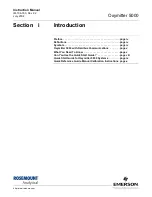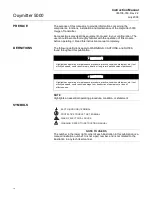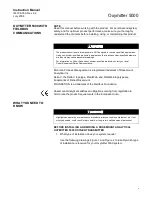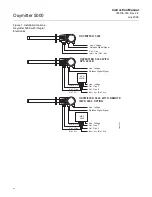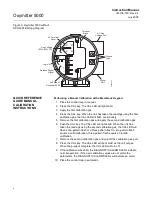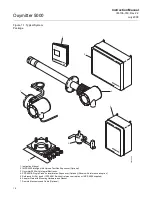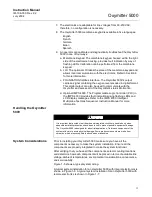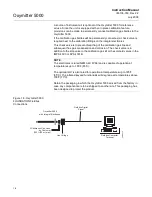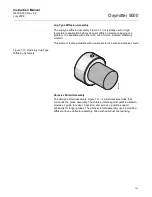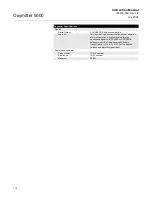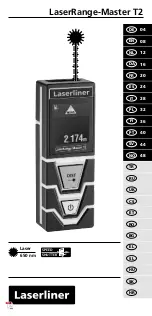
Instruction Manual
IM-106-350, Rev 2.2
July 2008
1-3
Oxymitter 5000
Foundation fieldbus
Technology
Foundation fieldbus is an all digital, serial, two-way communication system
that interconnects field equipment such as sensors, actuators, and
controllers. Fieldbus is a Local Area Network (LAN) for instruments used in
both process and manufacturing automation with built-in capacity to distribute
the control application across the network. The fieldbus environment is the
base level group of digital networks in the hierarchy of planet networks.
The fieldbus retains the desirable features of the 4-20 mA analog system,
including a standardized physical interface to the wire, bus powered devices
on a single wire, and intrinsic safety options, and enables additional
capabilities, such as:
• Increased capabilities due to full digital communications
• Reduced wiring and wire terminations due to multiple devices on one
set of wires
• Increased selection of suppliers due to interoperability
• Reduced loading on control room equipment with the distribution of
some control and input/output functions to field devices
• Speed options for process control and manufacturing applications
System Description
The Oxymitter 5000 is designed to measure the net concentration of oxygen
in an industrial combustion processes process; i.e., the oxygen remaining
after all fuels have been oxidized. The probe is permanently positioned within
an exhaust duct or stack and performs its task without the use of a sampling
system.
The equipment measures oxygen percentage by reading the voltage
developed across a heated electrochemical cell, which consists of a small
yttria stabilized, zirconia disc. Both sides of the disc are coated with porous
metal electrodes. When operated at the proper temperature, the millivolt
output voltage of the cell is given by the following Nernst equation:
EMF = KT log10(P1/P2) + C
Where:
1. P2 is the partial pressure of the oxygen in the measured gas on one
side of the cell.
2. P1 is the partial pressure of the oxygen in the reference air on the
opposite side of the cell.
3. T is the absolute temperature.
4. C is the cell constant.
5. K is an arithmetic constant.
NOTE
For best results, use clean, dry, instrument air (20.95% oxygen) as the
reference air.
Summary of Contents for Oxymitter 5000
Page 2: ......
Page 6: ......
Page 12: ......
Page 22: ...Oxymitter 5000 xii Instruction Manual IM 106 350 Rev 2 2 July 2008 ...
Page 42: ...Oxymitter 5000 1 20 Instruction Manual IM 106 350 Rev 2 2 July 2008 ...
Page 62: ...Oxymitter 5000 2 20 Instruction Manual IM 106 350 Rev 2 2 July 2008 ...
Page 74: ...Oxymitter 5000 4 6 Instruction Manual IM 106 350 Rev 2 2 July 2008 ...
Page 78: ...Oxymitter 5000 5 4 Instruction Manual IM 106 350 Rev 2 2 July 2008 ...
Page 94: ...Oxymitter 5000 7 6 Instruction Manual IM 106 350 Rev 2 2 July 2008 ...
Page 140: ...Oxymitter 5000 9 22 Instruction Manual IM 106 350 Rev 2 2 July 2008 ...
Page 184: ...Oxymitter 5000 B 2 Instruction Manual IM 106 350 Rev 2 2 July 2008 ...
Page 204: ...Oxymitter 5000 D 14 Instruction Manual IM 106 350 Rev 2 2 July 2008 ...
Page 222: ...Oxymitter 5000 E 18 Instruction Manual IM 106 350 Rev 2 2 July 2008 ...
Page 224: ...Instruction Manual IM 106 350 Rev 2 2 July 2008 Index 2 Oxymitter 5000 ...



